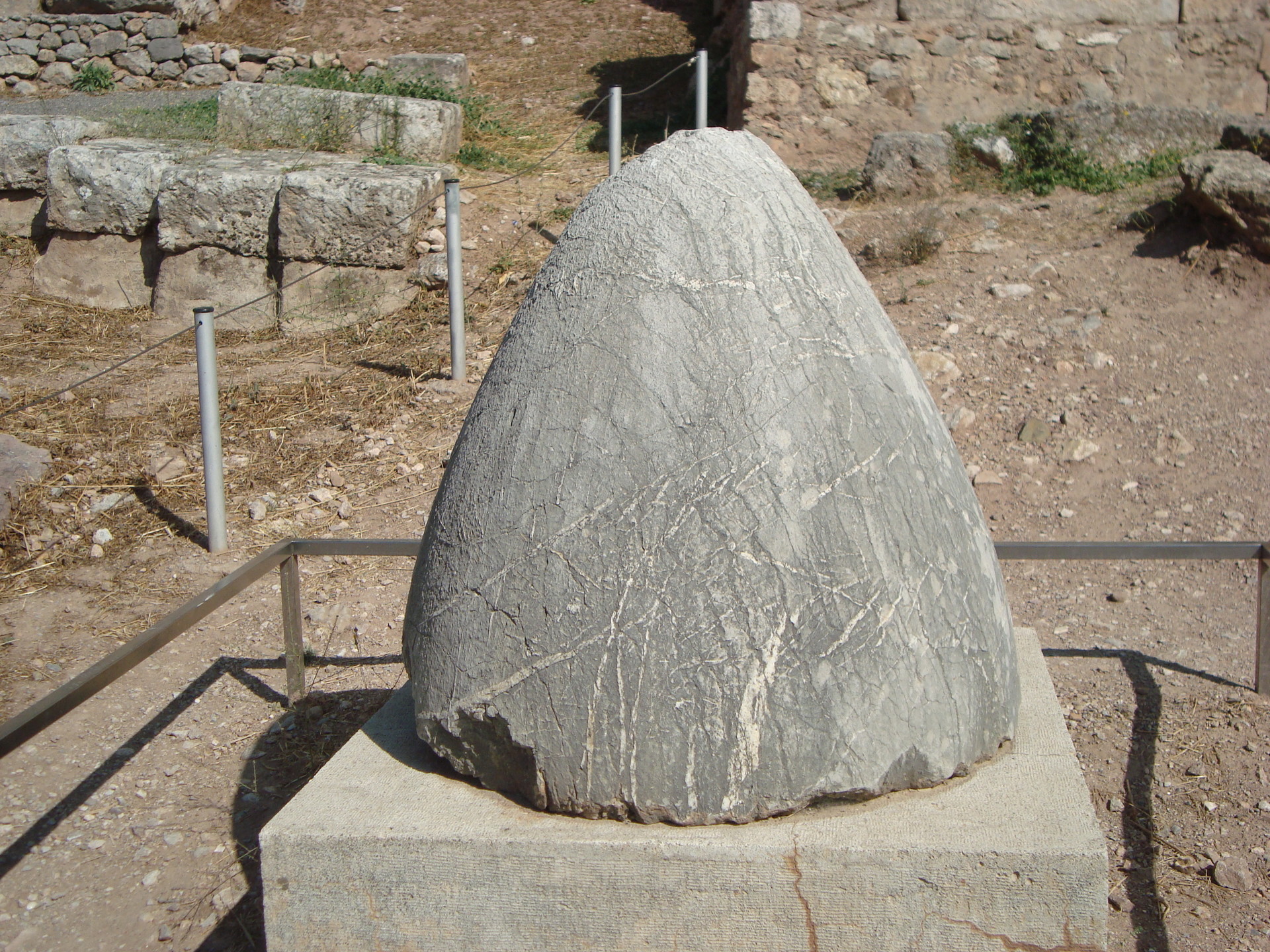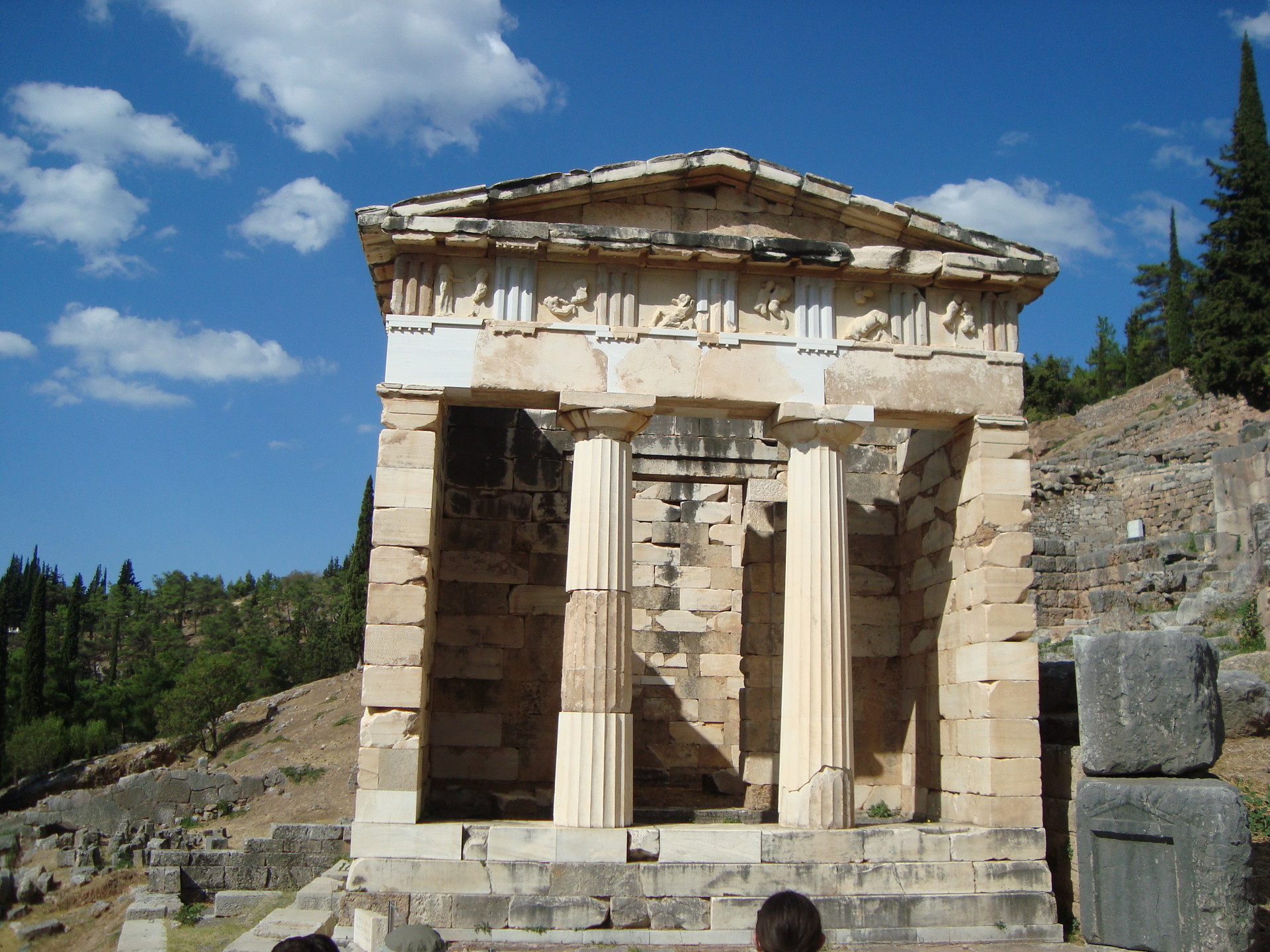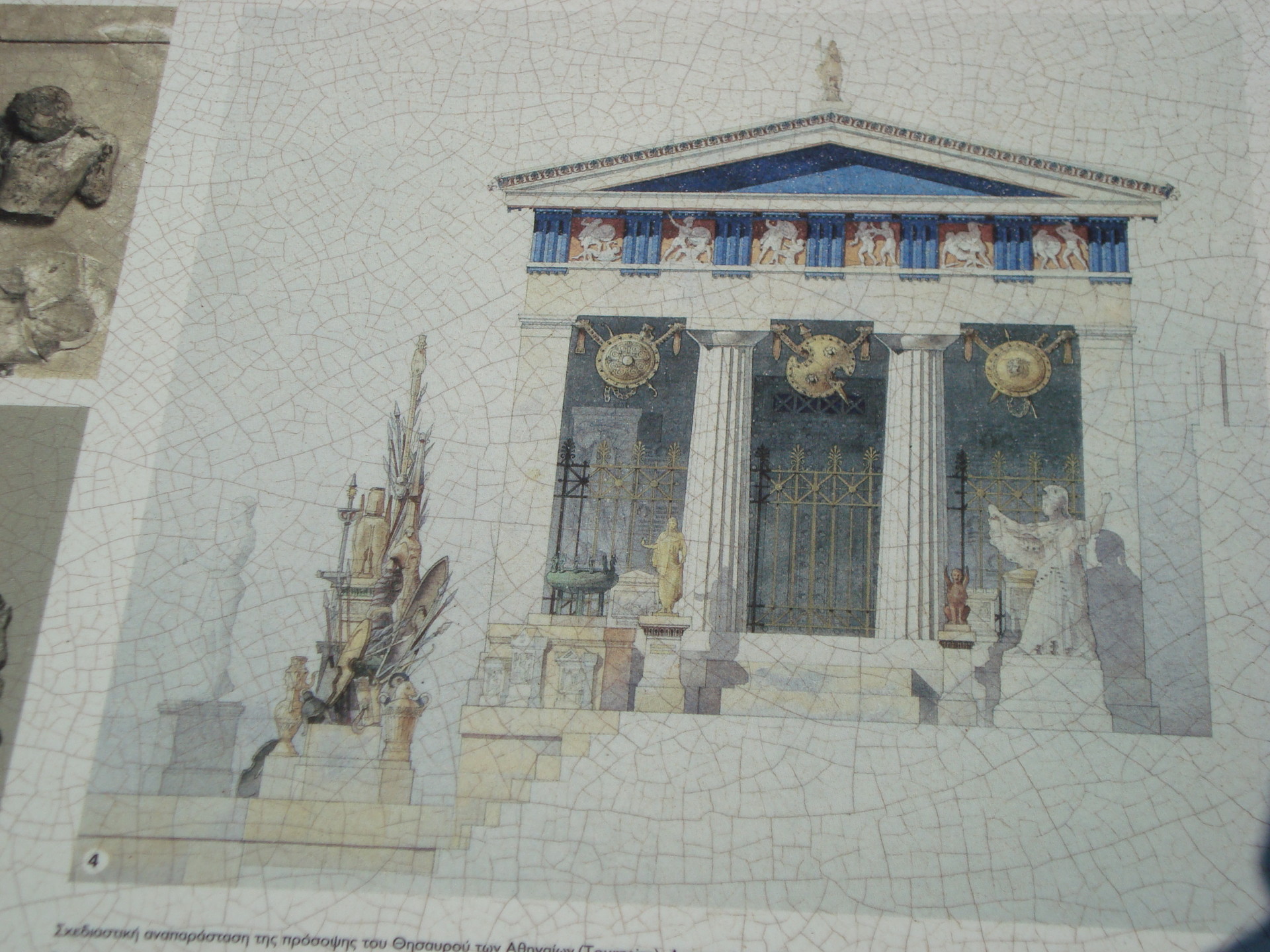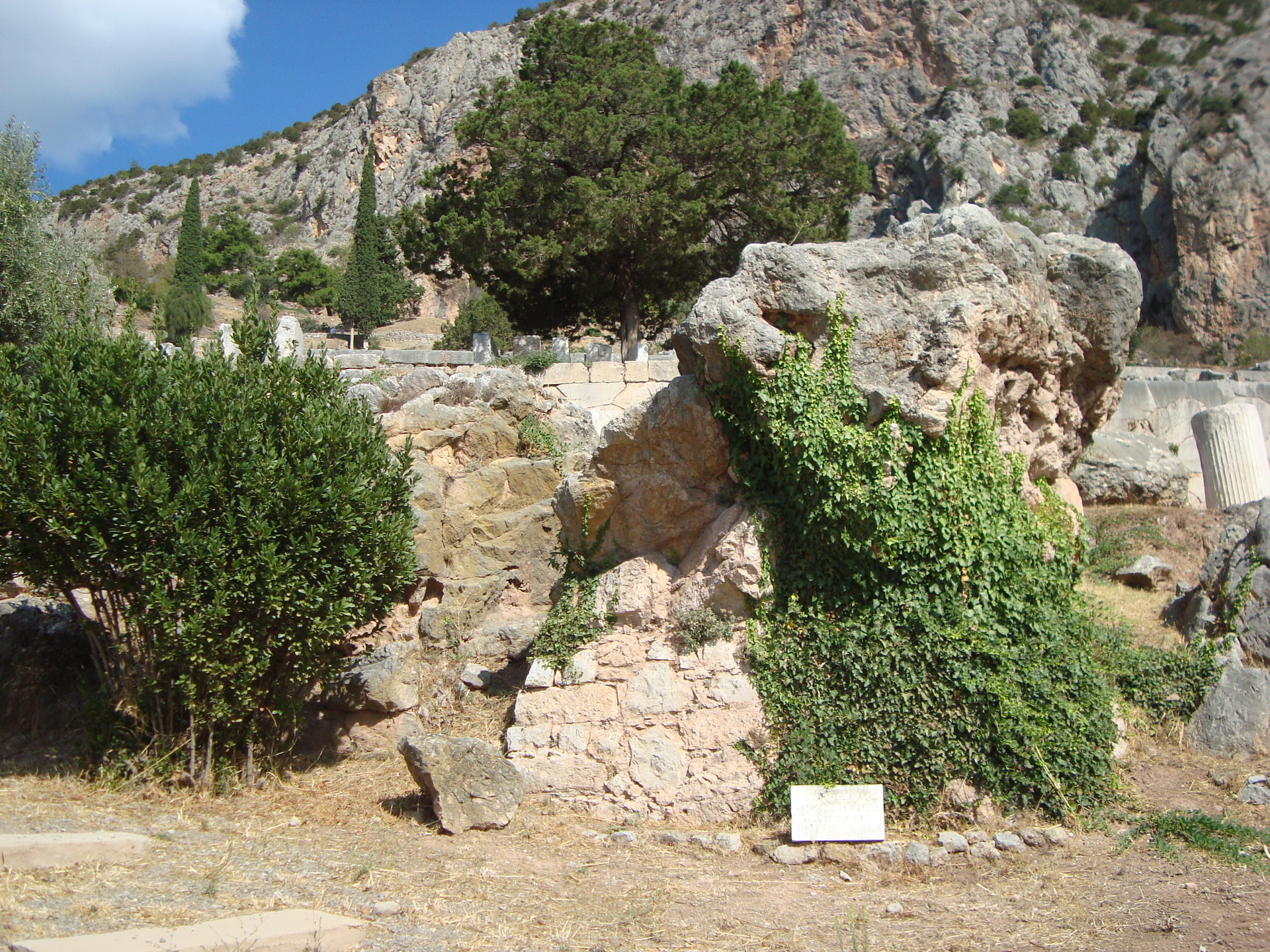Delphi: The Centre of the World and the Oracle
Delphi was considered to be the centre of the world in Ancient Greece. How come?

This oval stone (unfortunately a bit broken over time) is the Omphalos, the navel of the world (or at least a copy of it). According to legend, it fell down from the sky as a meteor after Zeus sent two eagles around the world in opposite directions in order to find the centre of the world.

Walking up the Holy Street, we saw this building: A thesaurus, "treasure-house", in which votive gifts of gold and silver were hidden. The metopes (reliefs on the upper rim of the building) show heroic fights of Hercules fighting the Lion of Nemea and the Hydra (water-snake) of Lerna. Others show also the Trojan War between Greeks and Trojans leading to the end of an era and the battle between Gods and Titans (of which Hesiod tells us, and which is shown in films such as Clash of the Titans and Wrath of the Titans).

Here, the building is reconstructed in colour (remember that many buildings and statues in antiquity were painted with bright colours which are simply washed off nowadays).

Further up, we saw the Pythion, the hill of the Pythia (the only woman priest allowed in the centre). It served as the famous oracle as follows: The Pythia (probably inhaling a natural gas containing ethylene) would utter sentences which would be interpreted by priests and made public. The cult of women priests stems from the earlier veneration of Gaia, an earth goddess who bore the snake Python which fought Apollon but was defeated here, according to legend. Next, you will see the Temple of Apollon ...
Photo gallery
Want to have your own Erasmus blog?
If you are experiencing living abroad, you're an avid traveller or want to promote the city where you live... create your own blog and share your adventures!
I want to create my Erasmus blog! →







Comments (0 comments)